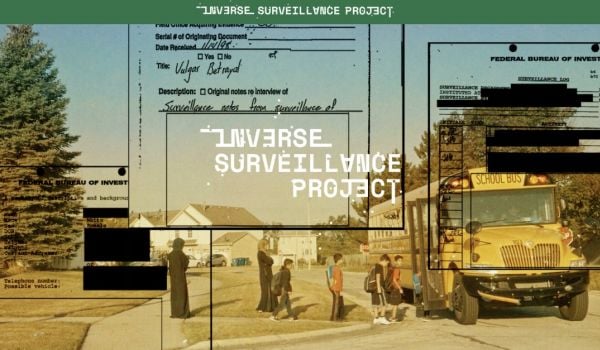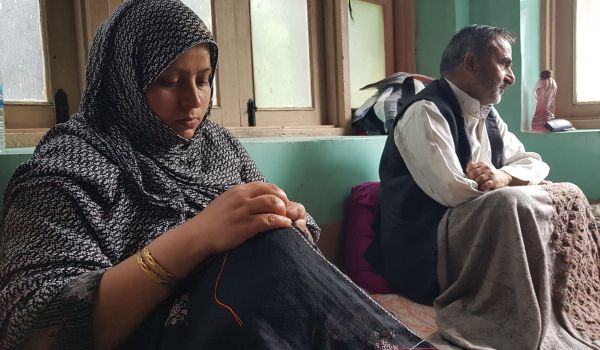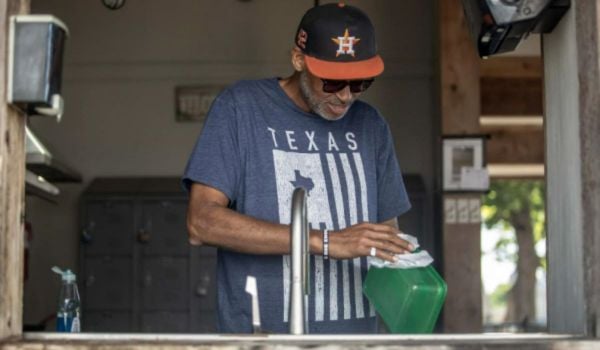It was 5:45 a.m. and I was running late. Relieved to spot a parking place, I squeezed my Honda CRV in between two hefty pickup trucks and hustled across the lot. Employees in neon yellow shirts, lit up by the passing cars’ headlights, streamed into the Kenneth Gardner Service Center, the main operations building for Austin Resource Recovery—Austin’s trash department.
I was there to pitch my idea of making a dance. The employees at this meeting were field staff, or operators, and were mostly male (96%) and predominantly African American (47%) and Hispanic (43%). The employees in the room that day were attending a monthly safety meeting; hearing about dance from a white woman who had never worked alongside them was probably not something they expected. “I’d say about 60% of us in that room paid attention when you started speaking just because we did not have women come talk to us much,” remembers Don Anderson, then a supervisor. “I think most of us were thinking, ‘Who is this lady?’”
But I felt in my element. Meeting with a group of understandably skeptical people and presenting what I knew seemed like a wacky idea charged me up. I went through my presentation, showing a clip of the dance I had made with the Austin fire department. I strategically avoided using the word “dance” to describe my idea — I didn’t want people to begin imagining leotards, tutus, turns and kicks. Instead, I said we would create a “show” and a “free public event” to educate Austinites about the work of trash collection. All I needed from them right now, I concluded, was permission to shadow them on the job; nobody — and here I used the word strategically—would be dancing just yet.
For over 20 years, I have been making dances with people who don’t think of themselves as dancers but are movement experts nonetheless. I founded Forklift Danceworks, a community-based dance company in Austin, Texas, in 2001. We have partnered with multiple City of Austin departments — Fire, Sanitation, Power, Police, Urban Forestry, Aquatics, Animal Services and Watershed Protection — to create one-of-a-kind performances through which city employees share the movement and stories of their work and lives.

“Dance Works: Stories of Creative Collaboration,” by Allison Orr. (Courtesy Wesleyan University Press)
These City of Austin partnerships have been our biggest projects, but we have made dances with many other people: college custodial staff and dining crews, warehouse employees, maintenance teams, a symphony conductor, Venetian gondoliers, adult roller skaters, neighborhood elders, people who are visually impaired. To date, we have produced 30 unique performance projects in five countries, partnering with 1,500 collaborators for a total audience of more than 45,000 people. We endeavor to give the partnering community a platform to share their stories on their terms, accompanied by theatrical lighting and live, original music..
We use dancemaking as a means to build trust and create opportunities for change. Audiences leave our performances with a deeper appreciation for and understanding of the performing group—be they city staff, other institutional personnel or neighborhood residents. Relationships are created and nurtured across lines of power and perceived difference—between employee and boss, resident and city staff member, elected city official and neighborhood leader, elder and young person.
As a choreographer coming from a modern dance background, I see an inherent and natural relationship between the movement of labor and dance. The movements I observe at places of work are purposeful, spatially precise, and follow clear rhythmic patterns. Picture a master arborist pruning a tree, repelling from limb to limb as she balances her weight and coordinates the timing of each step. While working, as when dancing, people pay close attention to aesthetics and intentionally create beauty. Imagine a grounds crew as they meticulously drag a baseball infield, creating a flawlessly smooth playing surface, or a master cake baker, twirling lifelike roses out of icing.
If you know a carpenter’s work well enough, you can see his unique hand in the shelf he has carefully molded out of a piece of pine. At the same time, ensembles of workers maintain our neighborhoods, towns and cities through their coordinated movement and expertise. Both also demand a commitment to learning, years of study, an acute understanding of technique, and often an apprenticeship with an expert. The hours of devotion it takes to create well-crafted works of dance and labor are often difficult to see or appreciate. Deeply embodied knowledge makes movement look effortless.
Despite these similarities, labor and dance are assigned different cultural values. Artists, though often faced with low economic compensation, can accrue a measure of cultural respect, validation, and capital that those who perform physical labor are often denied. What’s more, many artists have something laborers do not: an audience that can provide applause, encouragement, financial support, recognition and feedback. Jobs that require physical labor are commonly lower-paid and categorized as “unskilled,” and the essential, physical work laborers do often goes unseen.
Customers don’t usually know who does the work and what it takes to keep their water clean, their power turned on, and their trash picked up. Customers and service workers have an inherent relationship, but it remains underacknowledged and depersonalized. When the labor can be witnessed, with stories and movements that showcase workers’ expertise, customers move to a new role—that of an audience, attentive to the people and knowledge they may have taken for granted. Through performance, a new relationship emerges, and with it the groundwork for other shifts in perspective, including the desire to effect systemic change.
Movement and dance offer an opportunity to create relationships and build agency across lines of difference. Movement is inherent to our humanness, and dance can be made with anyone and anybody. The making of a dance is a creative act that can, when following values of inclusiveness and respect, bring a team of people together in an entirely new way, for we have to bring our minds and bodies into collaboration. The dance becomes a sort of third space—not me, not you, but something we share.
A new form of communication emerges when electric linemen are asked to string a power line—something they have done on their own hundreds of times—in unison with each other and in relation to the beat of the music.
People also take risks as they make something new. People move beyond ordinary ways of being and connecting with each other, building trust and seeing themselves and their fellow coworkers or neighbors in new and more expansive ways. Groups strengthen their capacity to work together, solve problems, and listen to each other. Distance between managers and entry-level staff can disappear when people collaborate and perform together.
When sanitation staff performed in September 2009, the dance offered the audience a chance to consider all that we throw away. You couldn’t help but notice all the work and machines involved in funneling garbage from work and home to the landfill. But more importantly, you saw that the people who work closest with trash, in a job that many people look down upon, deserve recognition and respect.
Perhaps, I realized as the dance began to shape under the leadership of the employees, understanding our inherent connections to one another will make us readier to care for each other and the world we share.
Excerpt adapted from “Dance Works: Stories of Creative Collaboration,” by Allison Orr. Published with permission from Wesleyan University Press.

Allison Orr is founder and artistic director of Forklift Danceworks based in Austin, Texas and a Distinguished Fellow in the College of the Environment at Wesleyan University.







_600_350_80_s_c1.jpeg)








